Vomiting occurs when food in the stomach is forcefully and involuntarily expelled. Vomiting is usually preceded by nausea. Vomiting can be caused by many things including illness, pregnancy, motion sickness, food poisoning, gastroenteritis (“stomach flu”), alcohol consumption, and migraines. Some medications can also cause nausea and vomiting. Many cases of vomiting can be treated at home. However, contact your doctor if your condition does not improve or if you experience certain symptoms.
Step
Method 1 of 3: Taking Care of Yourself
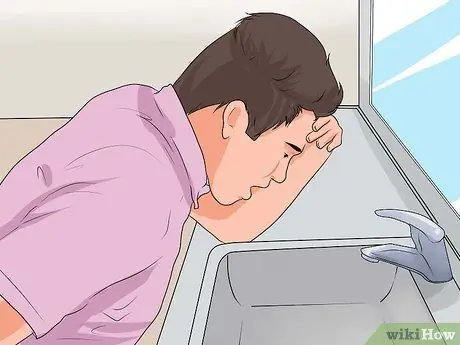
Step 1. Support your head
Your head can move a lot when you vomit. Try to support it as best you can.
Tie or pull your hair back. This way, the vomit won't hit the hair
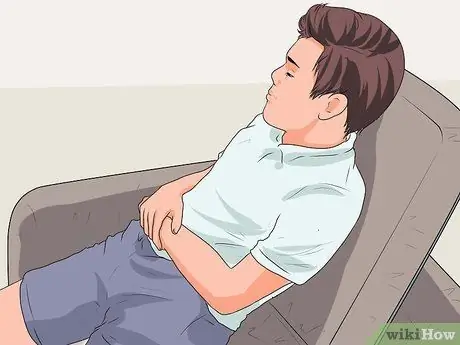
Step 2. Sit or lie down with support
Pillows on the sofa can be used to support you when lying down. Don't move around a lot or lie on a flat surface as it will only make you feel more uncomfortable.
- If you can't stand up, lie on your side so you don't choke on your own vomit.
- You may also choke on the vomit if you lie on your back without support.
- Do not lie down after eating because it may cause nausea.
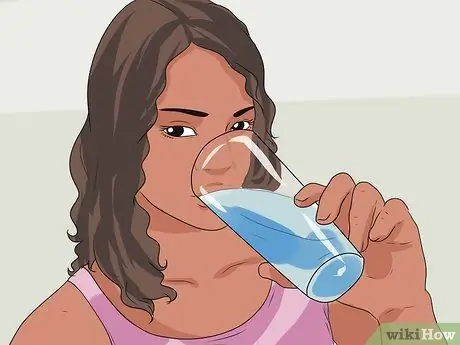
Step 3. Drink fluids
Vomiting can quickly lead to dehydration. However, drinking too much water can also make you want to throw up again. Drink water slowly and in small amounts. Try drinking 30 ml of water every 20 minutes or so.
- Because they melt very slowly, ice or popsicles can help prevent dehydration and help relieve nausea.
- Try drinking lemon water, ginger tea, or mint tea.
- Clear liquids such as broth, apple juice, and isotonic drinks also usually help.
- If vomiting continues, you may have an electrolyte imbalance. Drink rehydration fluids or isotonic drinks that contain electrolytes.
- Avoid milk, alcohol, caffeine, carbonated drinks, and most fruit juices. Milk and carbonated drinks can cause nausea. Alcohol and caffeine can make you dehydrated. Fruit juices like grapefruit juice or orange juice contain too much acid and can trigger you to vomit again.
- Eat foods that are high in water, such as watermelon, to help keep you hydrated.

Step 4. Eat small portions of food
Eating too much food can trigger nausea and vomiting. Instead of large portions, try to eat small portions.
- Eat soft foods such as biscuits, toast, potatoes, and rice. Bananas and applesauce are also good choices because they are less likely to cause an upset stomach. Meanwhile, grilled chicken or fish without spices can be a good source of protein.
- Avoid oily and spicy foods such as sausages, fast food, and potato chips. Fried and very sweet foods should also be avoided.
- Avoid food products made from milk. Vomiting can temporarily make your body lactose intolerant, even if you don't usually have a problem eating it.
- Eat slowly. Don't force yourself to eat too much. A stretched stomach (due to fullness) can make nausea worse and lead to vomiting.
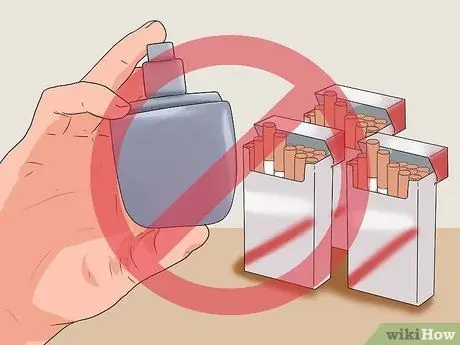
Step 5. Avoid triggers that make you vomit
Vomiting can be caused by certain triggers, especially in people who are very sensitive to fragrances.
- The smell of oily food can trigger nausea.
- If the smell of food is the trigger that makes you vomit, ask someone else to help you cook. This condition is very common in early pregnancy.
- In some people, strong smells such as cigarette smoke and perfume can trigger nausea and vomiting.

Step 6. Get some fresh air
Treatment for vomiting often includes medical treatment that uses oxygen. This type of oxygen treatment may not be possible at home. However, the fresh air you breathe while sitting by the window or taking a walk outside can also help with nausea and vomiting.

Step 7. Call the doctor
Nausea and vomiting can be caused by many things. In most cases, you can treat it at home. However, call your doctor if you can't eat or drink anything for 12 hours or more, or if you continue to have nausea and vomiting for 48 hours. Call the emergency department immediately if you experience any of the following symptoms along with nausea and vomiting:
- Severe stomach pain, cramping OR severe chest pain
- Blurred or double vision
- Fainting before or after vomiting
- Confusion
- Cold, wet and pale skin
- High fever
- Stiff neck
- Severe headache
- Symptoms of dehydration (excessive thirst, lethargy, dry mouth)
- The vomit is green, has a coffee bean-like texture, or contains blood
- Vomit contains feces
- Vomiting after a head injury
Method 2 of 3: Coping with Nausea and Vomiting with Other Techniques
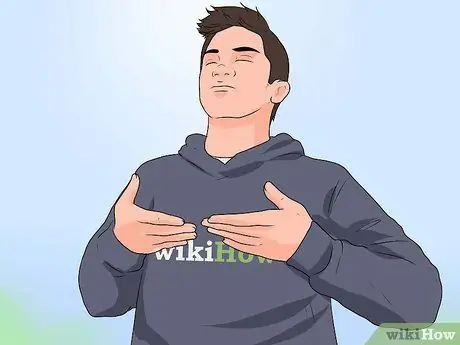
Step 1. Try to take a deep breath
This technique can get much-needed oxygen back into your body. To help with nausea, doctors also recommend deep abdominal breathing.
- Place one hand on the center of your stomach and the other on your chest.
- Inhale through your nose at a normal rate. Compared to the hand on the chest, the hand on the stomach should feel more moving outwards. The lower part of the chest and abdomen should be filled with air.
- Exhale through your mouth.
- Inhale deeply and slowly through your nose. Hold your breath as long as you can.
- Exhale again slowly through your mouth.
- Repeat this technique for at least 4 times.
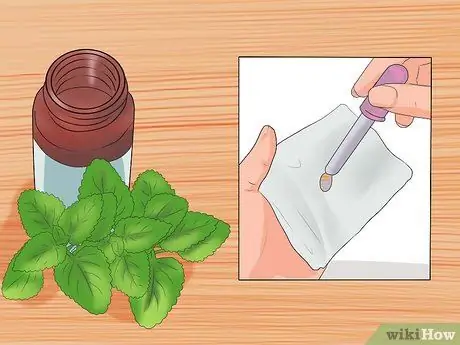
Step 2. Consider aromatherapy
Aromatherapy involves smelling fragrances from plant extracts and other chemicals. Smell the aromatherapy scent through gauze that has been applied 1-2 drops of aromatherapy extract. Scientific research has proven that the following essential oils and chemicals can help with nausea and vomiting:
- Peppermint oil. Peppermint oil can help to reduce feelings of nausea.
- Ginger extract. The aroma of ginger can help you relieve an upset stomach and prevent vomiting.
- Isopropyl alcohol. Isopropyl alcohol, also known as pure alcohol, can help reduce the urge to vomit if inhaled in very small amounts.
- Do not use these ingredients more than 1-2 drops! If you use too much or inhale too deeply, your nose will become irritated.

Step 3. Consume ginger
Ginger can help with nausea and vomiting when inhaled or consumed. In addition to its natural form, ginger is also sold in powder, tablet, and tea forms.
- Ginger-flavoured soft drinks can make you feel better. However, natural ginger or ginger supplements are more effective because most of these soft drinks do not contain many of the compounds found in natural ginger. The soda content in these drinks can also make nausea worse.
- Make ginger tea/herbal ginger tea. This tea can be made in many recipes, but one simple recipe is to grate a few tens of grams of ginger root (one good-sized "book" of ginger). Add 1/2 teaspoon of grated ginger root for every 240 ml of hot water. Leave the solution for 5-10 minutes. If you like it, you can also add honey. A slightly sweet drink can help relieve an upset stomach.
- The maximum safe consumption of ginger supplements is 4 grams (about 3/4 teaspoon).
- Women who are pregnant and breastfeeding can safely drink ginger tea. However, ginger consumed should not be more than 1 gram per day.
- Ginger may interfere with the effects of some anticoagulant medications. If you are taking anticoagulant drugs, consult your doctor first before consuming ginger.
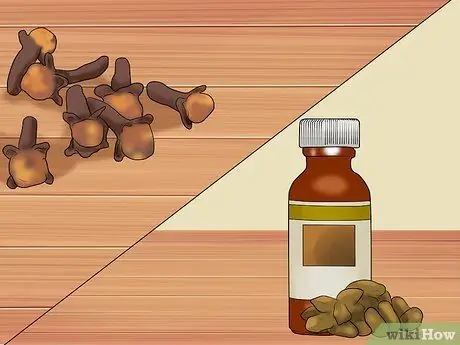
Step 4. Try other herbal remedies
Other spices commonly recommended for nausea and vomiting are cloves, cardamom extract, cumin seed, and Baikal root extract. However, these ingredients have not been widely studied clinically. You can try it to see the effect, but the results may not be as effective.
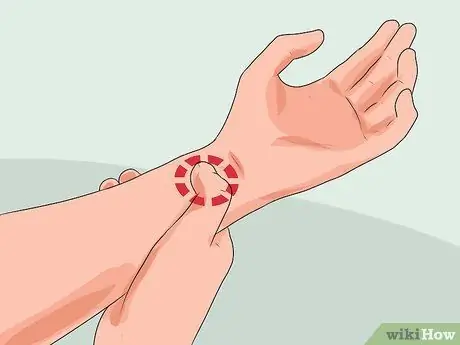
Step 5. Try acupressure
Unlike acupuncture, which involves needles and professional training, mild acupressure can be done at home. When stimulated, the P6 acupuncture point on the inside of the hand can prevent nausea and vomiting. This stimulation sends signals to the spinal cord and brain, which then release chemicals that prevent nausea and vomiting into the bloodstream.
- Find pressure point P6 aka “Neiguan”. Position the palms of your hands so that they are facing you and the fingers pointing up.
- Place 3 fingers of the other hand horizontally on the wrist. Use your thumb to feel the spot just below the index finger. There are two large tendons in the wrist area.
- Press the point for 2-3 minutes in a circular motion.
- Repeat this technique on the other wrist.
- You can also use acupressure strips such as Sea-band® or ReliefBand®.
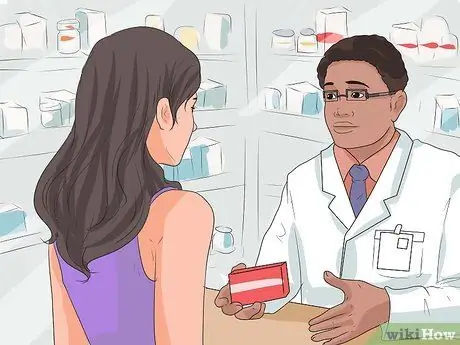
Step 6. Take over-the-counter medications
Bismuth subsalicylate (Kaopectate, Pepto-Bismol) can be used to treat mild vomiting caused by food poisoning or overeating.
- Sometimes, nausea can be treated with antihistamine drugs such as meclizine and dimenhydrinate. Both of these drugs will be especially effective for nausea caused by motion sickness. However, these medications can cause drowsiness.
- Do not take these drugs more than the recommended dose.
Method 3 of 3: Coping with Vomiting in Children

Step 1. Recognize "spitting up"
Spitting up in babies is not the same as vomiting. Babies often pass milk or food after eating. However, spitting up is normal and nothing to worry about.
Vomiting in infants can signal a serious illness such as intestinal obstruction. Call your doctor or pediatrician right away if your baby is vomiting vigorously (not spitting up) or has frequent vomiting
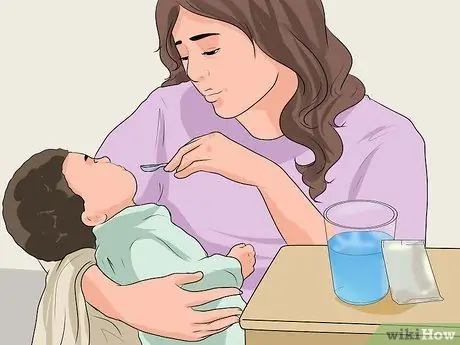
Step 2. Make sure that your child is well hydrated
Dehydration can be dangerous, especially for children. Compared to adults, children's bodies process electrolytes more quickly. To keep the child well hydrated, use oral rehydration medications/solutions.
- Use a commercially available rehydration solution such as Pedialyte. You can make your own rehydration solution at home. However, due to the high risk of errors that may arise, pediatricians recommend using commercial rehydration solutions.
- Tell your child to drink slowly. Give your child 1-2 teaspoons (5-10 ml) of fluid every 5-10 minutes.
- Avoid fruit juices, soft drinks, and water. These drinks will not be enough to restore the electrolyte balance and keep the child's body hydrated.
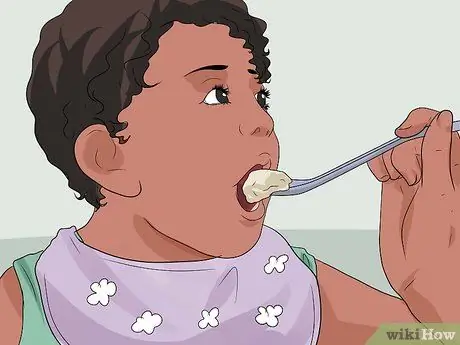
Step 3. Give your child small portions of food
Do not give your child solid food for the first 24 hours after vomiting. After the child stops vomiting, give soft-textured foods such as agar, mashed potatoes, soup, rice, and bananas. Don't force your child to eat if he doesn't want to.
- Avoid foods that are high in fiber and sugar.
- Breast milk will help keep the baby hydrated and provide him with adequate nutrition.
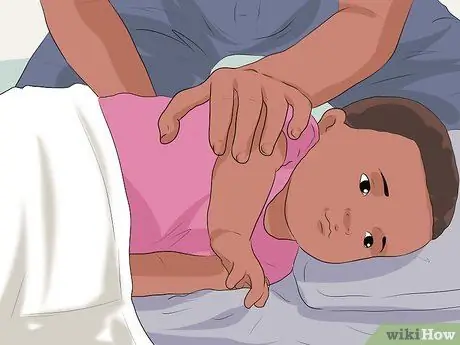
Step 4. Make your child lie on his side
Children may swallow or choke on their vomit if they lie on their back. Make sure your child is lying on his side.
When lying down, make sure older children are supported by pillows
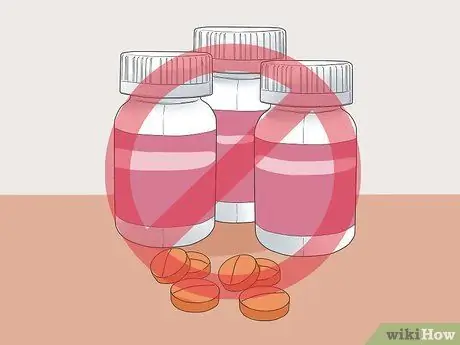
Step 5. Avoid using the drug
Children should not be given over-the-counter medications such as Pepto-Bismol or antihistamines. If given in the wrong dose, these drugs can cause serious illness.
Consult with your pediatrician to determine which drugs are safe to give to your child
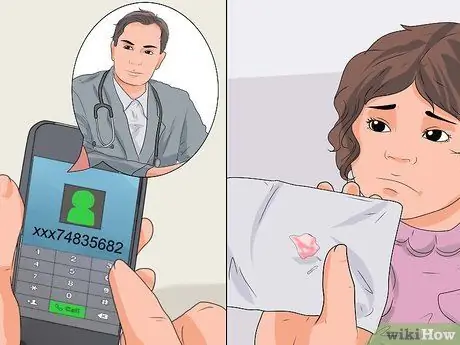
Step 6. Call the doctor
Call the pediatrician if your child is unable to drink any fluids or if the symptoms get worse. You should also call your doctor if your child has any of the following symptoms:
- The vomit contains blood
- The vomit is green or bright yellow
- Dehydration
- Stool is black or dark
Tips
- Eat small meals throughout the day. Snacks such as biscuits or toast can also help make the stomach full.
- Don't drink large amounts of water until your stomach can handle it. Drinking too much water can make vomiting worse and increase the risk of dehydration. Drink water little by little and increase the amount every 20 minutes.
- Avoid oily, spicy, or fatty foods.
- Inhaling peppermint can help soothe your stomach.
- Do not give your child sweets, fizzy drinks, or any fatty foods as this will make the condition worse.
Warning
- Call your doctor or hospital if you have been vomiting for more than 12 hours.
- Call your doctor right away if you notice any of the symptoms listed in Method 1.







